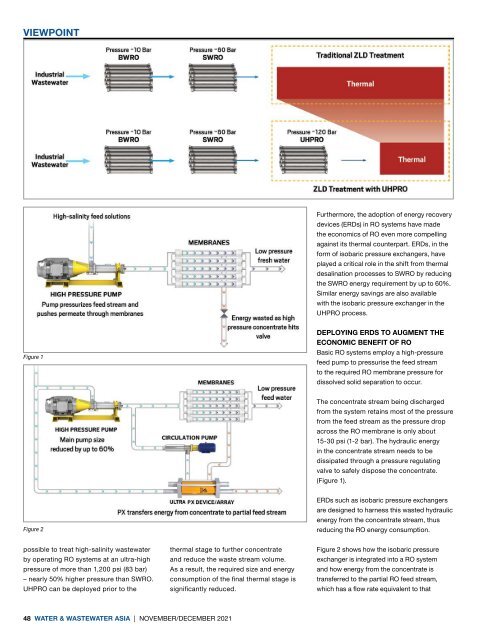Water & Wastewater Asia November/December 2021
Water & Wastewater Asia is an expert source of industry information, cementing its position as an indispensable tool for trade professionals in the water and wastewater industry. As the most reliable publication in the region, industry experts turn this premium journal for credible journalism and exclusive insight provided by fellow industry professionals. Water & Wastewater Asia incorporates the official newsletter of the Singapore Water Association (SWA).
Water & Wastewater Asia is an expert source of industry information, cementing its position as an indispensable tool for trade professionals in the water and wastewater industry. As the most reliable publication in the region, industry experts turn this premium journal for credible journalism and exclusive insight provided by fellow industry professionals. Water & Wastewater Asia incorporates the official newsletter of the Singapore Water Association (SWA).
Create successful ePaper yourself
Turn your PDF publications into a flip-book with our unique Google optimized e-Paper software.
VIEWPOINT<br />
Furthermore, the adoption of energy recovery<br />
devices (ERDs) in RO systems have made<br />
the economics of RO even more compelling<br />
against its thermal counterpart. ERDs, in the<br />
form of isobaric pressure exchangers, have<br />
played a critical role in the shift from thermal<br />
desalination processes to SWRO by reducing<br />
the SWRO energy requirement by up to 60%.<br />
Similar energy savings are also available<br />
with the isobaric pressure exchanger in the<br />
UHPRO process.<br />
Figure 1<br />
DEPLOYING ERDS TO AUGMENT THE<br />
ECONOMIC BENEFIT OF RO<br />
Basic RO systems employ a high-pressure<br />
feed pump to pressurise the feed stream<br />
to the required RO membrane pressure for<br />
dissolved solid separation to occur.<br />
The concentrate stream being discharged<br />
from the system retains most of the pressure<br />
from the feed stream as the pressure drop<br />
across the RO membrane is only about<br />
15-30 psi (1-2 bar). The hydraulic energy<br />
in the concentrate stream needs to be<br />
dissipated through a pressure regulating<br />
valve to safely dispose the concentrate.<br />
(Figure 1).<br />
Figure 2<br />
ERDs such as isobaric pressure exchangers<br />
are designed to harness this wasted hydraulic<br />
energy from the concentrate stream, thus<br />
reducing the RO energy consumption.<br />
possible to treat high-salinity wastewater<br />
by operating RO systems at an ultra-high<br />
pressure of more than 1,200 psi (83 bar)<br />
– nearly 50% higher pressure than SWRO.<br />
UHPRO can be deployed prior to the<br />
thermal stage to further concentrate<br />
and reduce the waste stream volume.<br />
As a result, the required size and energy<br />
consumption of the final thermal stage is<br />
significantly reduced.<br />
Figure 2 shows how the isobaric pressure<br />
exchanger is integrated into a RO system<br />
and how energy from the concentrate is<br />
transferred to the partial RO feed stream,<br />
which has a flow rate equivalent to that<br />
48 WATER & WASTEWATER ASIA | NOVEMBER/DECEMBER <strong>2021</strong>


















